Optimization of Cu/Sn Alloy Sputtering Process Based on Orthogonal Experimental Design Method
Abstract
:1. Introduction
2. Experiment
2.1. Experimental Principle
2.2. Experimental Process
2.3. Orthogonal Experimental Design
3. Results
3.1. Analysis of Orthogonal Test Results
| A/Pa | B/min | C/W | D | (yi)/V | |
|---|---|---|---|---|---|
| 1 | 1 | 1 | 1 | 1 | 5.965 |
| 2 | 1 | 2 | 2 | 2 | 4.502 |
| 3 | 1 | 3 | 3 | 3 | 3.231 |
| 4 | 2 | 1 | 2 | 3 | 11.612 |
| 5 | 2 | 2 | 3 | 1 | 6.783 |
| 6 | 2 | 3 | 1 | 2 | 7.271 |
| 7 | 3 | 1 | 3 | 2 | 7.481 |
| 8 | 3 | 2 | 1 | 3 | 7.503 |
| 9 | 3 | 3 | 2 | 1 | 5.001 |
| 13.698 | 25.058 | 20.739 | 17.749 | K = 59.349 P = 391.367 Q = 437.274 | |
| 25.666 | 18.788 | 21.115 | 19.254 | ||
| 19.985 | 15.503 | 17.495 | 22.346 | ||
| 415.260 | 407.078 | 394.008 | 395.029 | ||
| 23.893 | 15.711 | 2.641 | 3.662 | = 45.907 |
3.2. Influence of Process Parameters on the Uniformity of Copper–Tin Alloy Film
3.3. Influence of Process Parameters on Deposition Rate
3.4. Influence of Process Parameters on Target Current and Operating Voltage
3.5. Microscopic Analysis of Samples
4. Conclusions
Author Contributions
Funding
Data Availability Statement
Conflicts of Interest
References
- Hu, Y.; Chen, X.S.; Du, Y.; Yin, T. Applcation and development of supercapacitors. Electr. Power Equip. 2008, 9, 19–22. [Google Scholar]
- Hong, J.H. Study on the Properties of Electromagnetic Shielding Textile Materials Prepared by Magnetron Sputtering. Master’s Thesis, Jiangnan University, Wuxi, China, 2007. [Google Scholar]
- Wang, B.; Shen, Q.; Zhang, L.X.; Wang, Z.; Qi, C.; Ma, Y.T. Optimization of Mo film process parameters based on orthogonal test. J. Beijing Univ. Technol. 2022, 48, 79–84. [Google Scholar]
- Dong, L.; Zuo, D.W.; Xu, F. Experimental optimization of preparation process parameters of pure Vanadium(IV) oxide film. Chem. Eng. 2018, 32, 12–17. [Google Scholar]
- Ma, G.Z.; Xu, B.S.; Wang, H.D.; Xing, Z.; Zhang, S. Study on optimization process, microstructure and properties of Mo film prepared by magnetron sputtering. Rare Met. Mater. Eng. 2014, 43, 2221–2226. [Google Scholar]
- Zhao, D.; Liang, T.; Lin, L.N.; Li, X.; Yao, Z.; Qi, L. Optimization of Process Parameters for Low Temperature Preparation of Al Film by Magnetron Sputtering. Microelectron. Nanoelectron. Technol. 2017, 54, 852–857 + 870. [Google Scholar]
- Singh, V.; Julien, B.; Salvagnac, L.; Pelloquin, S.; Hungria, T.; Josse, C.; Belhaj, M.; Rossi, C. Influence of process parameters on energetic properties of sputter-deposited Al/CuO reactive multilayers. Nanotechnology 2022, 33, 465704. [Google Scholar] [CrossRef] [PubMed]
- Olayinka, A.; Esther, A.; Philip, O. Process parameters optimization to maximize surface roughness using response surface methodology of TiC thin film grown by radio frequency magnetron sputtering. Mater. Today Proc. 2020, 44, 1221–1226. [Google Scholar] [CrossRef]
- Vanmathi, M.; Kumar, M.S.; Ismail, M.M.; Senguttuvan, G. Optimization of process parameters for al-doping back ground on CO gas sensing characteristics of magnetron-sputtered TiO2 sensors. Mater. Res. Express 2019, 6, 106423. [Google Scholar] [CrossRef]
- Martin, M.; Pierre, C.; Julien, V.; Amael, C.; Thierry, S.; Anne-Lise, T. Optimized magnetron sputtering process for the deposition of gadolinia doped ceria layers with controlled structural properties. Surf. Coat. Technol. 2020, 398. prepublish. [Google Scholar]
- Puźniak, M.; Gajewski, W.; Żelechowski, M.; Jamroz, J.; Gertych, A.; Zdrojek, M.; Mroczyński, R. Technology and optimization of hafnium oxynitride (HfOxNy) thin-film formed by pulsed-DC reactive magnetron sputtering for MIS devices. Microelectron. Eng. 2020, 228. [Google Scholar] [CrossRef]
- Bernal-Salamanca, M.; Balcells, L.; Konstantinović, Z.; Pomar, A.; Martínez, B.; Frontera, C. Optimization of the Growth Process of Double Perovskite Pr2−δNi1−xMn1+xO6−y Epitaxial Thin Film by RF Sputtering. Materials 2022, 15, 5046. [Google Scholar] [CrossRef] [PubMed]
- Liu, H.; Guo, W. The interplay of process parameters and influence on the AlN film on sapphire fabricated by DC magnetron sputtering and annealing. Semicond. Sci. Technol. 2023, 38, 015020. [Google Scholar] [CrossRef]
- Li, X.Y.; Li, T.M.; Jiang, Y.S.; Yan, H.; Zhang, L. Structure and magnetic properties of FeN thin film prepared by RF magnetron sputtering. Magn. Mater. Devices 2023, 54, 1–6. [Google Scholar]
- Ma, H.; Chen, Y.; Li, N.; Tan, C.; Rong, Y.; Chen, H.; Jia, J.; Zhang, L. Process optimization and effect of sputtering pressure on electrochromic properties of flexible WO3 film prepared by DC magnetron sputtering. Phys. B Condens. Matter 2023, 654, 414728. [Google Scholar] [CrossRef]
- Ma, H.M.; Ma, M.N.; Wang, Z.D.; Qin, Z.W.; Bian, S.K.; Chen, Y. Weathering resistance of aluminum alloy wheel hub magnetron sputtering coating to high gloss dielectric coating research on the Impact. Coat. Ind. 2019, 49, 34–39. [Google Scholar]
- Chen, X.F. Preparation, Physical Properties and Related Device Research of Indium Gallium Zinc Oxide Film. Master’s Thesis, Anhui University, Hefei, China, 2016. [Google Scholar]
- Zhang, Y.N.; Zhou, Z.C.; Zhang, H.; Xiao, Y.Q.; Den, N.; Fu, B.Y.; Duo, S.W. Effect of process parameters on microstructure and properties of plasma-enhanced magnetron sputtering TiAlN coating. Mater. Rep. 2022, 36, 51–56. [Google Scholar]
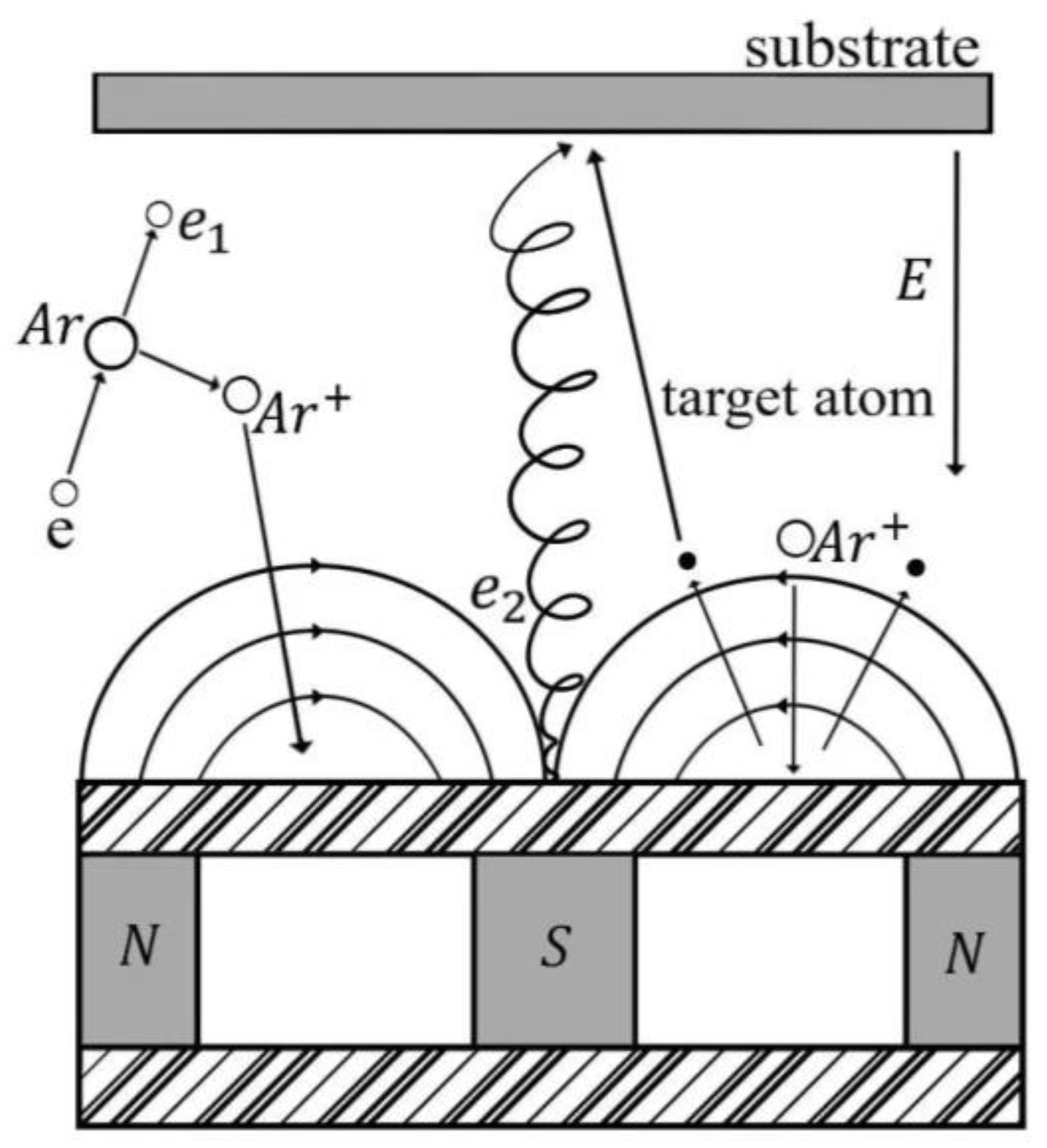
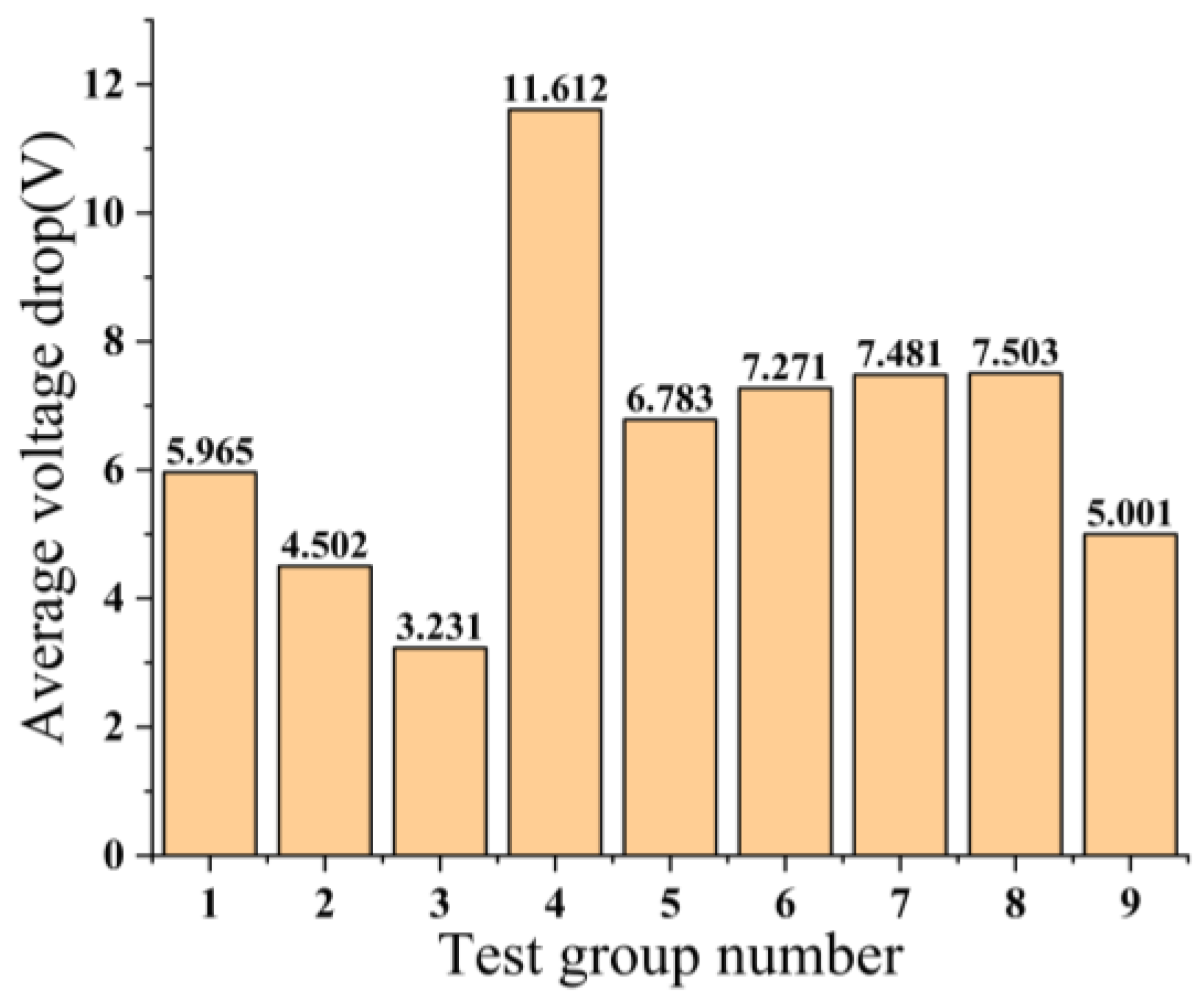

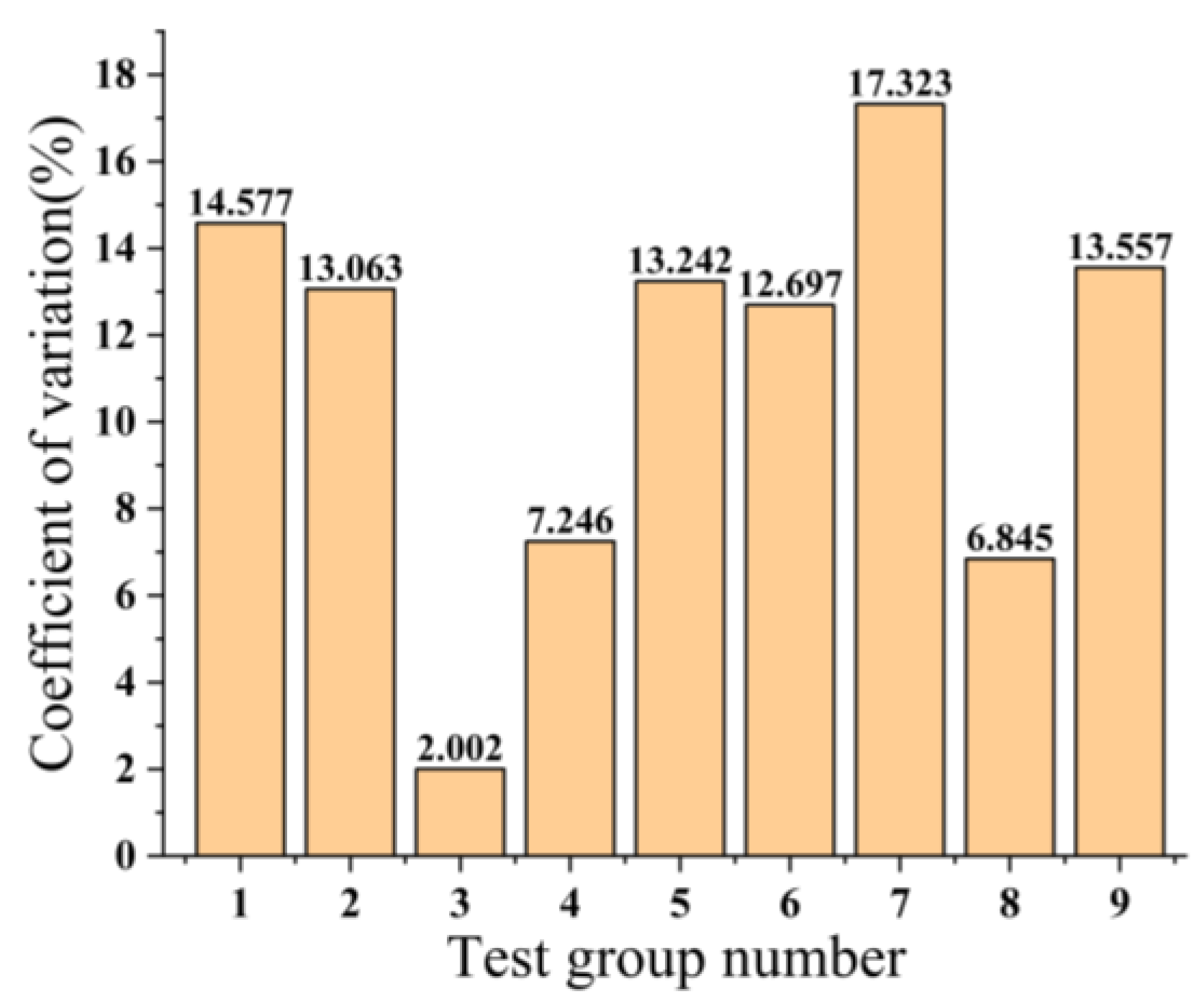
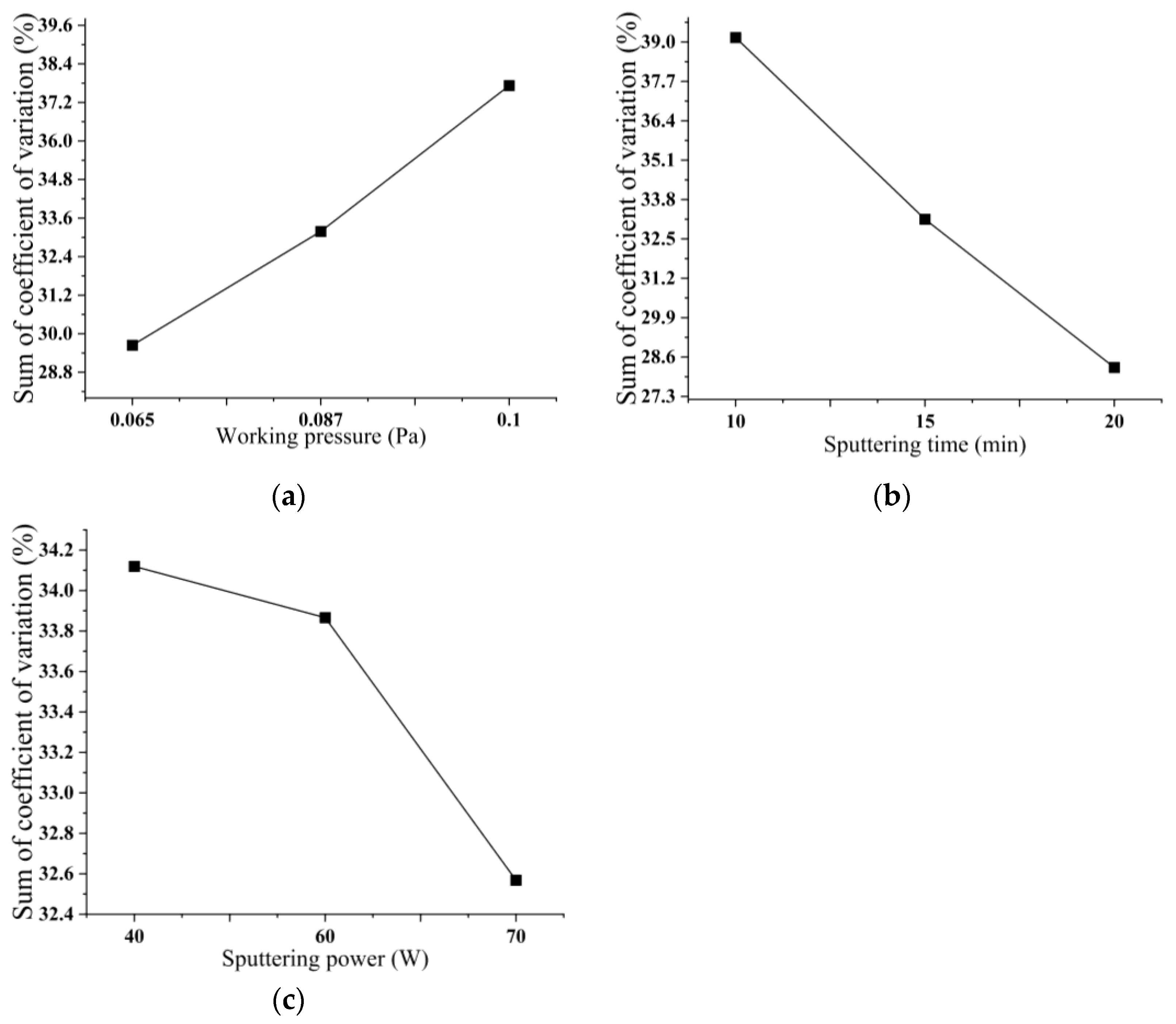
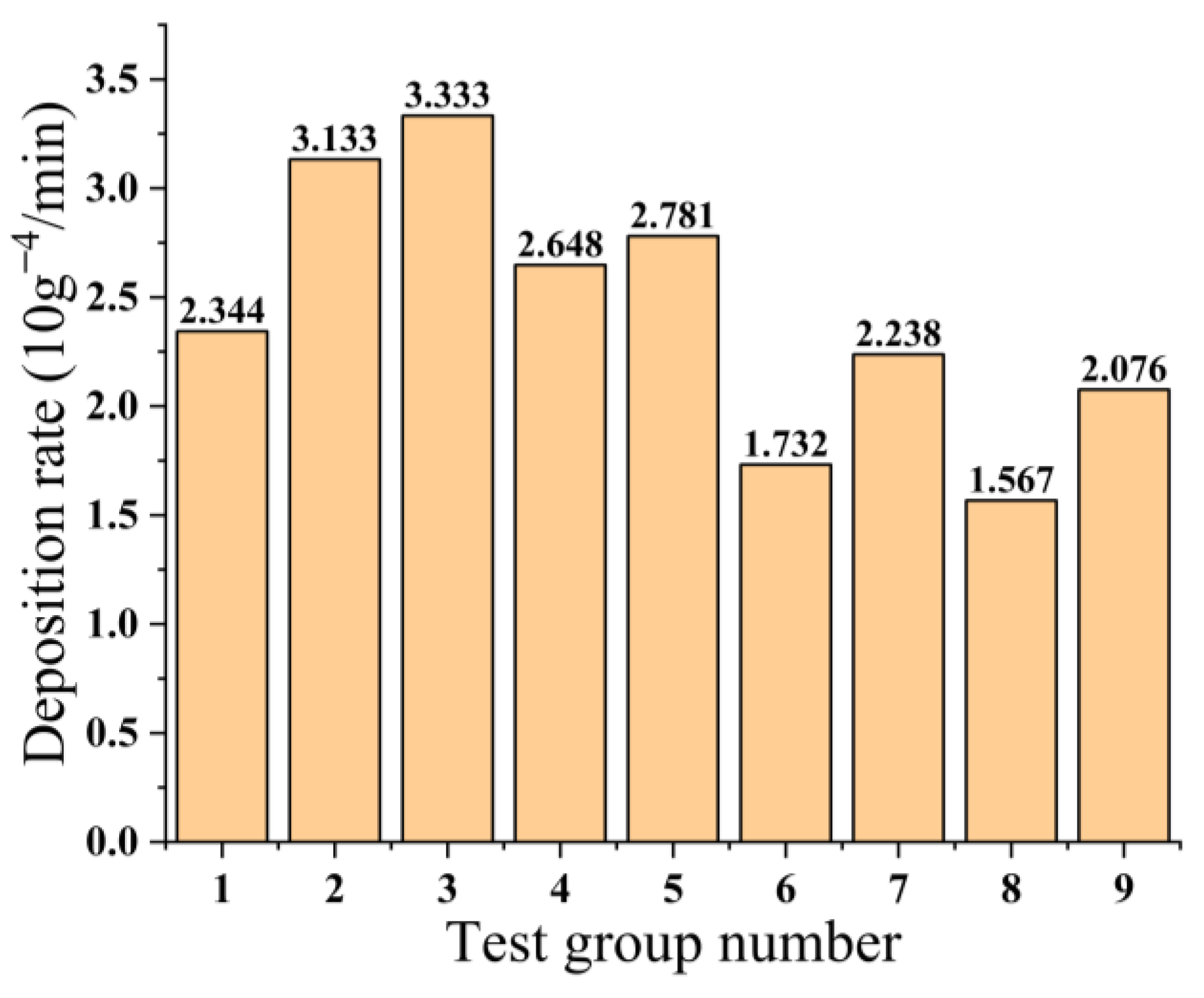
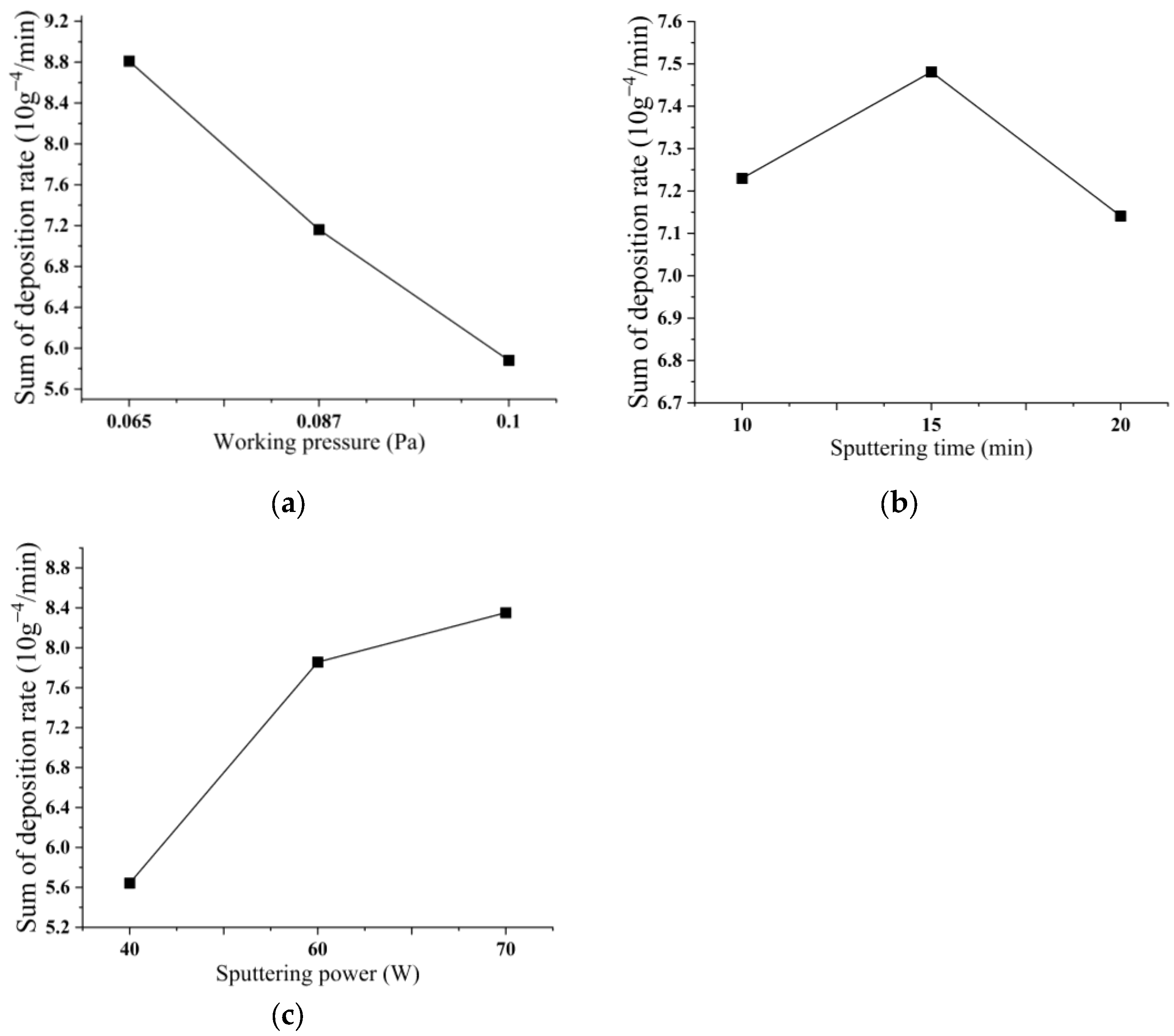
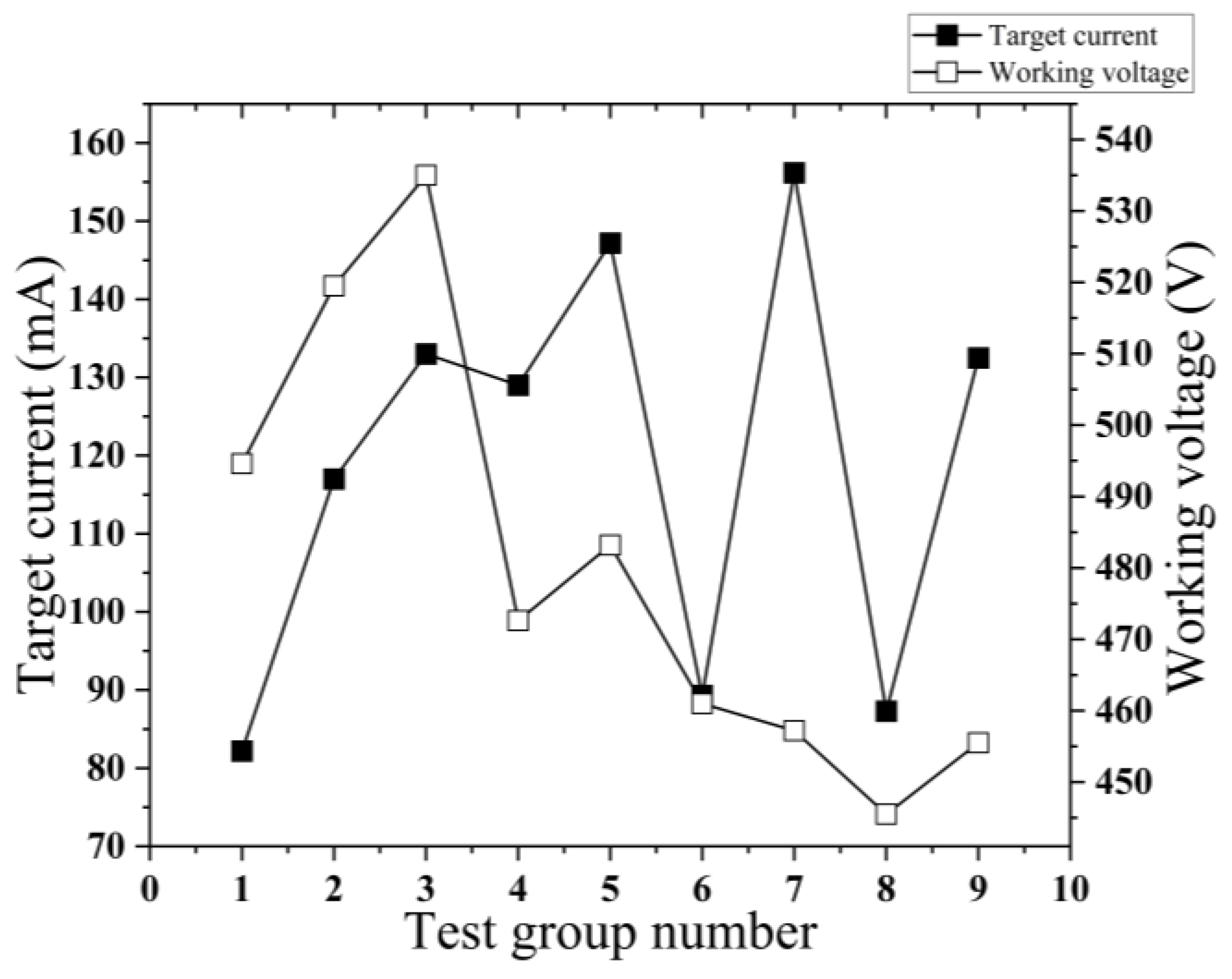
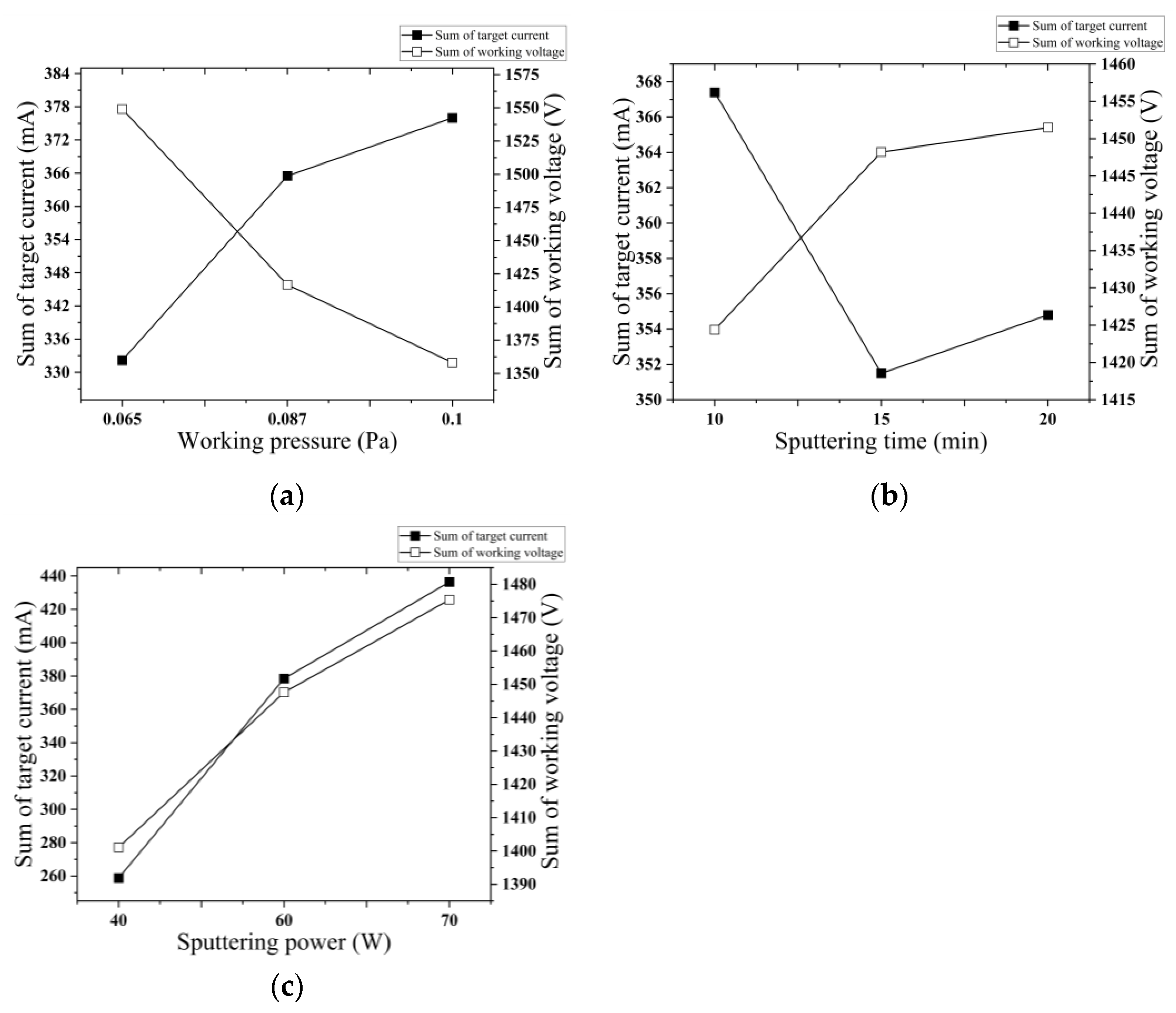



| Factor | A | B | C | D |
|---|---|---|---|---|
| Number | 1 | 2 | 3 | 4 |
| A/Pa | B/min | C/W | |
|---|---|---|---|
| 1 | 0.065 (1) | 10 (1) | 40 (1) |
| 2 | 0.065 | 15 (2) | 60 (2) |
| 3 | 0.065 | 20 (3) | 70 (3) |
| 4 | 0.087 (2) | 10 | 60 |
| 5 | 0.087 | 15 | 70 |
| 6 | 0.087 | 20 | 40 |
| 7 | 0.1 (3) | 10 | 70 |
| 8 | 0.1 | 15 | 40 |
| 9 | 0.1 | 20 | 60 |
| Group 1 | Group 2 | Group 3 | |||
|---|---|---|---|---|---|
| B1C1 | B1C2 | B1C3 | |||
| A1 | B2C2 | A2 | B2C3 | A3 | B2C1 |
| B3C3 | B3C1 | B3C2 | |||
Disclaimer/Publisher’s Note: The statements, opinions and data contained in all publications are solely those of the individual author(s) and contributor(s) and not of MDPI and/or the editor(s). MDPI and/or the editor(s) disclaim responsibility for any injury to people or property resulting from any ideas, methods, instructions or products referred to in the content. |
© 2023 by the authors. Licensee MDPI, Basel, Switzerland. This article is an open access article distributed under the terms and conditions of the Creative Commons Attribution (CC BY) license (https://creativecommons.org/licenses/by/4.0/).
Share and Cite
Liu, S.; Li, X.; Hao, Y.; Li, X.; Liu, F. Optimization of Cu/Sn Alloy Sputtering Process Based on Orthogonal Experimental Design Method. Micromachines 2023, 14, 1539. https://doi.org/10.3390/mi14081539
Liu S, Li X, Hao Y, Li X, Liu F. Optimization of Cu/Sn Alloy Sputtering Process Based on Orthogonal Experimental Design Method. Micromachines. 2023; 14(8):1539. https://doi.org/10.3390/mi14081539
Chicago/Turabian StyleLiu, Shuangjie, Xingwang Li, Yongping Hao, Xing Li, and Fengli Liu. 2023. "Optimization of Cu/Sn Alloy Sputtering Process Based on Orthogonal Experimental Design Method" Micromachines 14, no. 8: 1539. https://doi.org/10.3390/mi14081539






